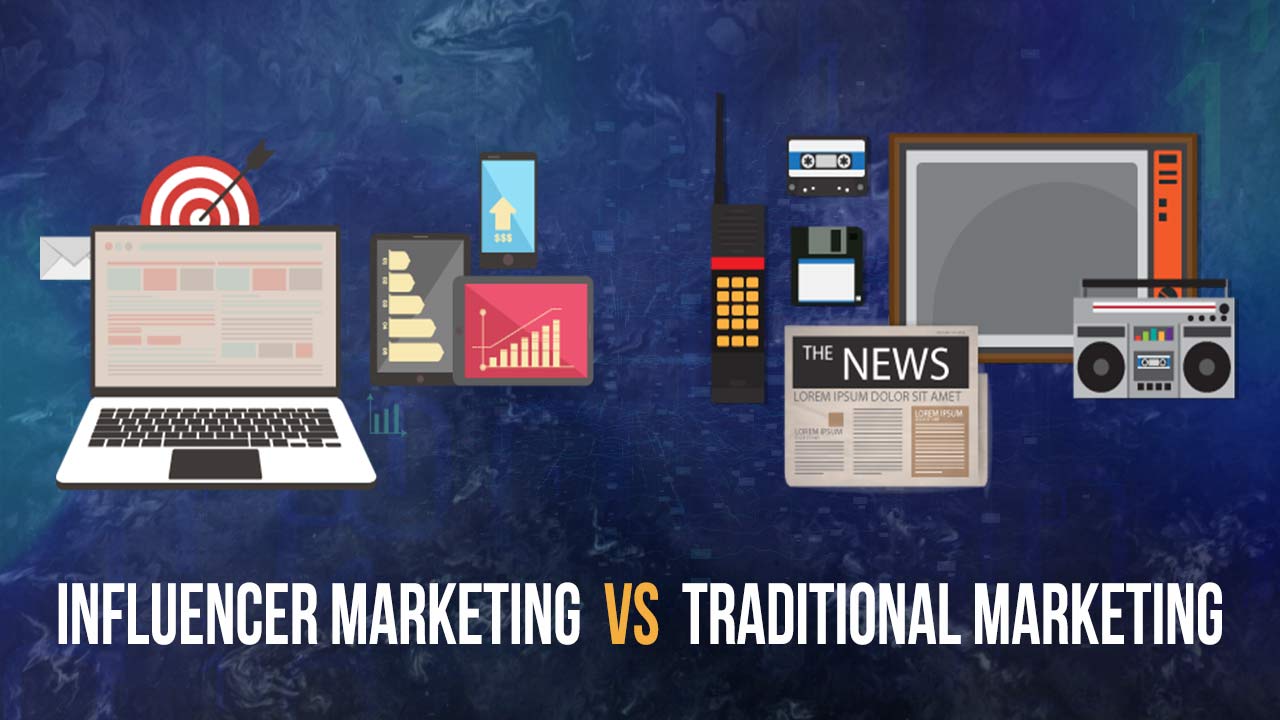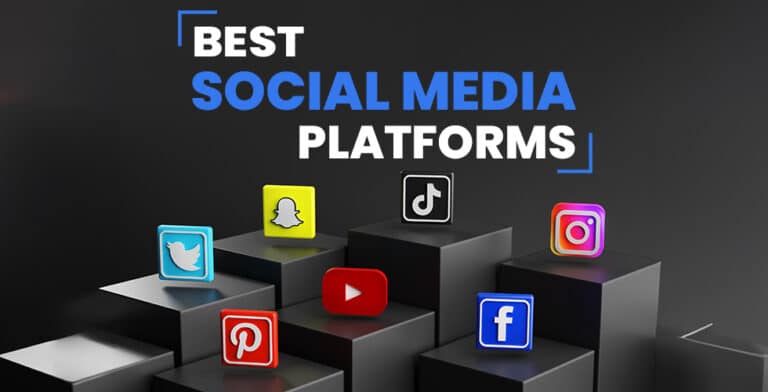Brands once advertised their products via TV, radio, and print media. But since social media has given rise to “influencers”, who are people with a significant following, companies can utilize influencer marketing to reach their target consumers.
Traditional marketing grew out of “word-of-mouth” marketing, in which happy customers told their peers about a good or service that they enjoyed. Influencer marketing has become more organized and measurable way for brands to use the power of word-of-mouth recommendations since the rise of social media. This article will help you understand the comparative analysis between influencer marketing vs traditional marketing and which would work best for your business.
What Is Influencer Marketing?
Influencer marketing is when a brand works with a popular online personality to promote one of its products or services. Some collaborations between brands and influencers are less concrete than that. In essence, brands work with influencers to primarily raise brand awareness.
In the past few years, influencer marketing has become a very popular way for brands to reach and interact with their target audiences. According to Influencer Marketing Hub, the influencer marketing industry reached a value of $16.4 billion in 2022. A survey by Linqia also showed that 94% of marketers who used influencer marketing in their campaigns confirmed that it was successful.
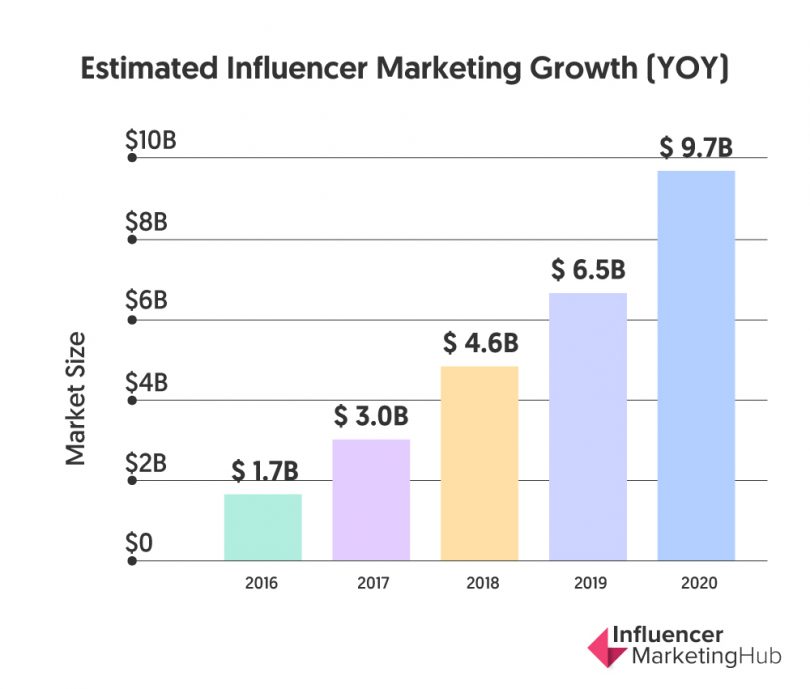
In contrast to celebrities, influencers can be found anywhere and it could be anyone. They have a lot of power because they have a lot of fans on the web and social media. A popular fashion photographer on Instagram, a well-read cybersecurity blogger who tweets, or a well-known marketing executive on LinkedIn can all be considered influencers. There are influential people in every field; you just have to find them. Some will have tens of thousands or millions of people who follow them. But many of them will look like regular people.
They might have only 10,000 followers or even fewer. Still, they will have made a name for themselves as experts in their field. People go to them when they want to know the answers to their questions. Depending on what they know best, they are the people who make the most interesting social posts about their areas of expertise. They share the best pictures, make the most entertaining videos, and hold the most interesting online discussions.
Types Of Influencer Marketing
Many different kinds of people can change things. Influencers can be famous people with millions of fans or regular people with a few thousand followers. They are usually put into one of the four groups below based on their audience size.
Nano-Influencers
Nano-influencers have 10,000 followers or less. This is the smallest audience size. These people could be experts in very niche fields or people who are just starting on their way to becoming influential. Even though their audience base is rather small, their followers are highly engaged.
Micro-Influencers
Micro-influencers have anywhere from 10,000 to 100,000 people who follow them. These people are usually experts in a niche field who have a fairly large and interested audience. They aren’t famous, and you wouldn’t know who they are if you passed them on the street.
Macro-Influencers
Macro-influencers have between 100,000 and 1 million people who follow them. These are some of the most approachable people with the most followers. Most of the time, they are B or C-list celebrities or people who blew up online and have worked hard to build up a large audience.
Mega-Influencers
Mega-influencers have a lot of followers. To be called a “mega influencer,” an influencer needs at least 1 million followers. Most of the time, these are famous people who have used their offline fame to make money online.
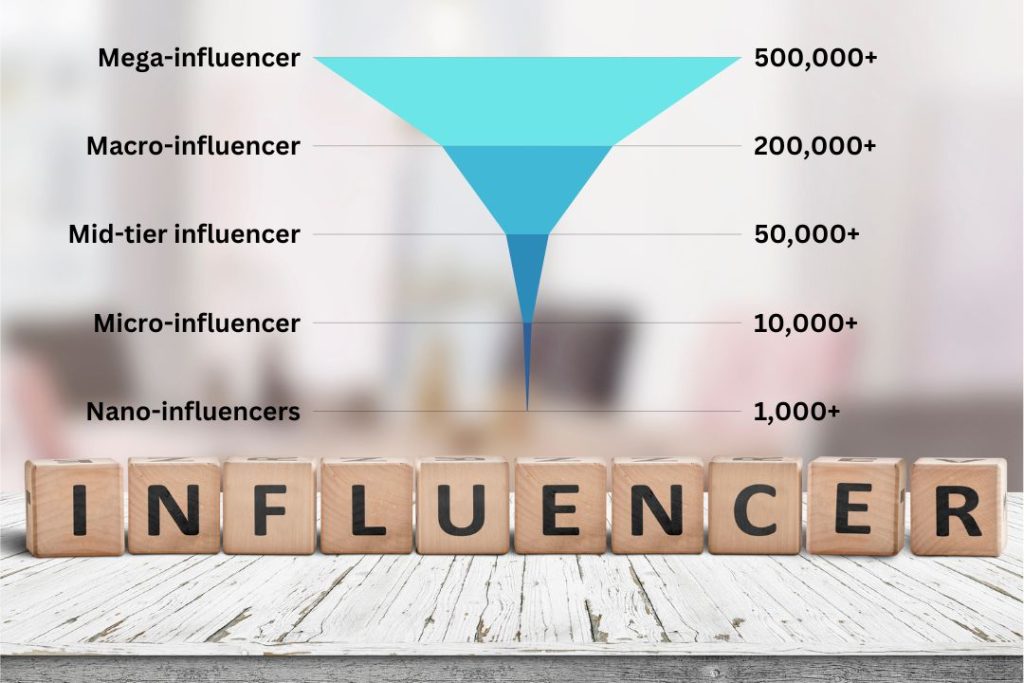
What Is Traditional Marketing?
Traditional marketing is meeting the target audience’s needs offline and making money from it. In simpler terms, traditional marketing means meeting consumer needs and wants through marketing channels before people had access to digital platforms.
It means that the 4Ps of marketing are met without using digital marketing channels. The traditional parts of this marketing mix are:
- Building an online product that works and meets customer needs.
- Using a strategy for pricing that doesn’t depend on online channels.
- Customers are reached through offline channels of distribution.
- Get the word out about the product through TV, radio, newspapers, etc.
Traditional marketing includes a lot of different ways to advertise and sell things. It was and still is, the most well-known marketing type that customers see daily.
Types Of Traditional Marketing
There are many different ways to use traditional marketing. Some examples of old-fashioned marketing strategies are:
Handouts
A handout is usually a printed document, like a flyer or brochure, that promotes a business, event, or sale. You can hand out these flyers in public places where people from the neighborhood often go to let them know about special events or ongoing sales.
Brochures can tell people about a company or describe a product’s features. You can hand them out at events or when you visit clients. Potential customers can keep these handouts with them or store them for later use when they want to learn more about a company or product.
Billboards
Most billboards are found along highways or other major roads. They show ads and graphics for a company. Billboards usually have pictures and words that go with them to send a short but memorable message to people driving by. Advertisements on creative billboards can help people recognize and remember your brand. Billboards can reach many people from many different places, which can be helpful if your goal is to get your brand known locally or nationally.
Direct Mail
Direct mail marketing is when you send letters or postcards to the addresses of potential customers in your target area. People interested in the company or its products can be sent direct mail. Sending direct mail to people close to the business is another option. These direct mail pieces can help them learn more about the company and see how close their home is to the business.
Postal Ads
You can reach more potential customers through print ads in newspapers and magazines. If you want to get more people in the community to know about your brand, placing ads in the newspaper can help them find out more about it, like where it’s located and what it sells. Find out what kinds of magazines or books your target audience usually reads, and put your ads in those kinds of books and magazines to get more sales leads.
Event Marketing
You can make advertising materials for industry events like seminars, conventions, and conferences with event marketing. You can set up booths and use larger materials like signs or banners to get people to visit your booth and learn more about the company and its products.
Think about putting up similar booths at other local events, like fairs or festivals, to get more attention from people in your area. You can also sponsor events, like sports games, to get more people to know and recognize your brand.
Broadcasting
Commercials for radio and TV are another way to get known in your area or country. Furthermore, you can create creative ads that help customers learn more about your brand and your products. People who hear or see these ads on the radio or TV may be interested enough to look up the company or get in touch with you to find out more.
Cold Calling
Companies that sell their goods or services over the phone use this type of marketing. It is also called “telemarketing.” Businesses that sell to other businesses (B2B) and businesses that sell to consumers (B2C) can both use cold calling. When you use a cold-calling strategy, you can talk to potential customers and tell them about the product you’re selling and how it can help them or their business. This gives you a chance to get to know your potential customers better and build trust between your company and them.
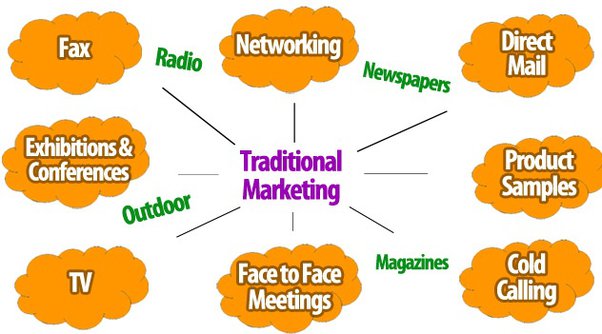
Similarities And Differences Between Influencer Marketing And Traditional Marketing
The following table outlines the similarities and differences between influencer marketing and traditional marketing:
| Influencer Marketing and Traditional Marketing Similarities |
| • Boosts awareness of a good or service |
| • Both marketing types can utilize stats to evaluate how successful the campaign was |
| • Influencer marketing and traditional marketing can be used to target certain groups of people |
Differences
| Influencer Marketing | Traditional Marketing |
| Relies on the credibility and trust of the influencer | Relies on the credibility and reputation of the brand |
| Often targeted at specific niche audiences | Can be targeted at a wide range of audiences |
| Can be more cost effective than traditional forms of advertising | It can be more expensive than influencer marketing |
| Often uses social media platforms to reach audiences | Uses a variety of mediums such as television, radio, and print media to reach audiences |
| It can seem more authentic and relatable to audiences | It can be seen as more formal and less personal |
| Can be measured through metrics such as engagement, reach, and conversions | Can be measured through metrics such as brand awareness, sales, and ROI |
Pros And Cons Of Traditional Marketing
Traditional marketing methods include brochures, posters, banners, direct mail, promotional items, and ads. These methods have been around for a long time, and there are several reasons why they are still useful today.
Local target Audiences Are Easily Accessible
When you advertise your business in local newspapers, magazines, or on the radio, you can reach customers of a certain area and age group. Flyers sent through the mail are another way to reach people in certain zip codes.
Something You Can Experience
Your audience can hold something like a flyer, ad, or coupon in their hands. They can also get free stuff like pens, caps, and t-shirts. They may keep these items and keep returning back to you.
Traditional advertising is easy to understand because it has been around for so long, and people know how it works. They don’t need to go to a website, download a coupon, or understand what a QR code does.
On the other hand, here are some cons to doing things the “traditional” way. Among these are:
Being Less Engaging
This is a passive form of marketing in which you give information and hope that people will buy something, sign up for something, or interact with you the way you want.
More Expensive
Advertising in newspapers, magazines, radio and TV can cost money and quickly burn through your budget. Print items like brochures and flyers can be expensive, so throwing them away is like throwing away money.
Problems With Getting Information
You want to know how much you made. This is hard to do with the old ways of doing things. You must collect data to know how well your marketing campaign performed, which is usually difficult to determine in traditional marketing strategies.
Pros And Cons Of Influencer Marketing
Influencer marketing has a lot of benefits, but we’ll be focusing on four: reaching the right customers, growing brand awareness, building trust with customers, and speeding up growth.
Targeting The Right People
Personas and ideal customer profiles are something that businesses work on for hours and for a good reason. Similarly, if you don’t focus your marketing on the right kinds of buyers, it will be hard to get any return on your investment at all.
By partnering with the right influencer, you can find the perfect customers with influencer marketing. If an influencer has fans who would be good customers for your business, all you have to do is look at their audience to find a good pool of potential buyers.
Increasing Brand Visibility
Influencers can have anywhere from a thousand followers to more than a million. When you work with an influential person, you can show yourself to all of these people. Even with good old-fashioned marketing, it’s hard to beat the power of getting so many people to look at your product with just one social media post.
Getting People To Trust You
When done right, influencer marketing can help your customers trust you and give you a huge boost in credibility.
Boost Rapid Business Growth
Influencer marketing isn’t just a way to get more people to take an interest in your business; it could also boost your sales quickly. If you can reach the followers of the right influencer, you’ll be sitting on a gold mine of new customers.
Working with influencers can be very helpful, but messing up your influencer marketing strategy could spell disaster for your business. Here are some of the risks associated with influencer marketing.
Choosing The Wrong Influencer to Collaborate With
Most of the benefits of influencer marketing depend on finding an influencer who is 1) passionate about your business, 2) real, and 3) followed by your ideal customers. If you work with an influencer who doesn’t meet these requirements, you might annoy your current customers, go after the wrong customers, or do both.
Legal Issues
When you work with influencers, you must ensure that consumers know about any paid partnerships. Likewise, if this isn’t clear to influencers, you could get in trouble with the FTC. To avoid problems like this, you should ensure that any influencer-sponsored promotions follow FTC endorsement guidelines.
Influencer Fatigue
Consumers have been hit with a steady stream of sponsored content in the past few years. In 2018, sponsored posts made up almost 40% of all posts. As more ads and influencers post paid content on platforms like Facebook and Instagram, it will be harder for people to know who to trust. Less than 5% of people believed what influencers posted on social media.
High Prices
Influencer marketing costs depend on how big an influencer’s following is. The more people in a partnership, the higher the cost.
Frequently Asked Questions
Which reaches target audiences better?
Influencer and traditional marketing may reach their target consumers, depending on the campaign and sector. Traditional marketing can reach more people, but influencer marketing can target narrower audiences.
Which one costs companies less?
Influencer marketing requires fewer media acquisition and production than traditional marketing. If you target a large audience, it may be more costly than traditional marketing.
How do you evaluate influencer marketing?
Engagement, reach, and conversions measure influencer marketing campaign success. These metrics measure the campaign’s revenue and brand recognition.
Are influencer marketing and traditional marketing compatible?
Yes, influencer marketing and traditional marketing can reach more people and have a bigger effect if they are utilized in unison.
Influencer marketing results take how long?
Influencer marketing campaigns vary in duration. Influencer campaigns often provide results in 4-6 weeks.
Influencer Marketing Vs. Traditional Marketing: Which One Should You Go For?
In conclusion – There are benefits and drawbacks to both influencer marketing and conventional marketing strategies. Compared to more conventional means of advertising, influencer marketing saves money while increasing brand awareness and trust among a target demographic. However, traditional marketing has a lengthy track record of success and is well-respected for its broad appeal and reputation-building capabilities.
Businesses should think about their intended customers, marketing objectives, and available resources before deciding. Furthermore, Influencer marketing may help a company gain credibility and trust with a target demographic. Similarly, traditional marketing may be the best choice for businesses that want to be known and liked by customers from a wide range of ages, incomes, and backgrounds.
It’s also important to remember that a hybrid approach, combining influencer marketing with more conventional forms of advertising, may successfully reach a broader audience and have a more profound effect. Your company’s unique requirements and objectives should inform the strategy you choose.

